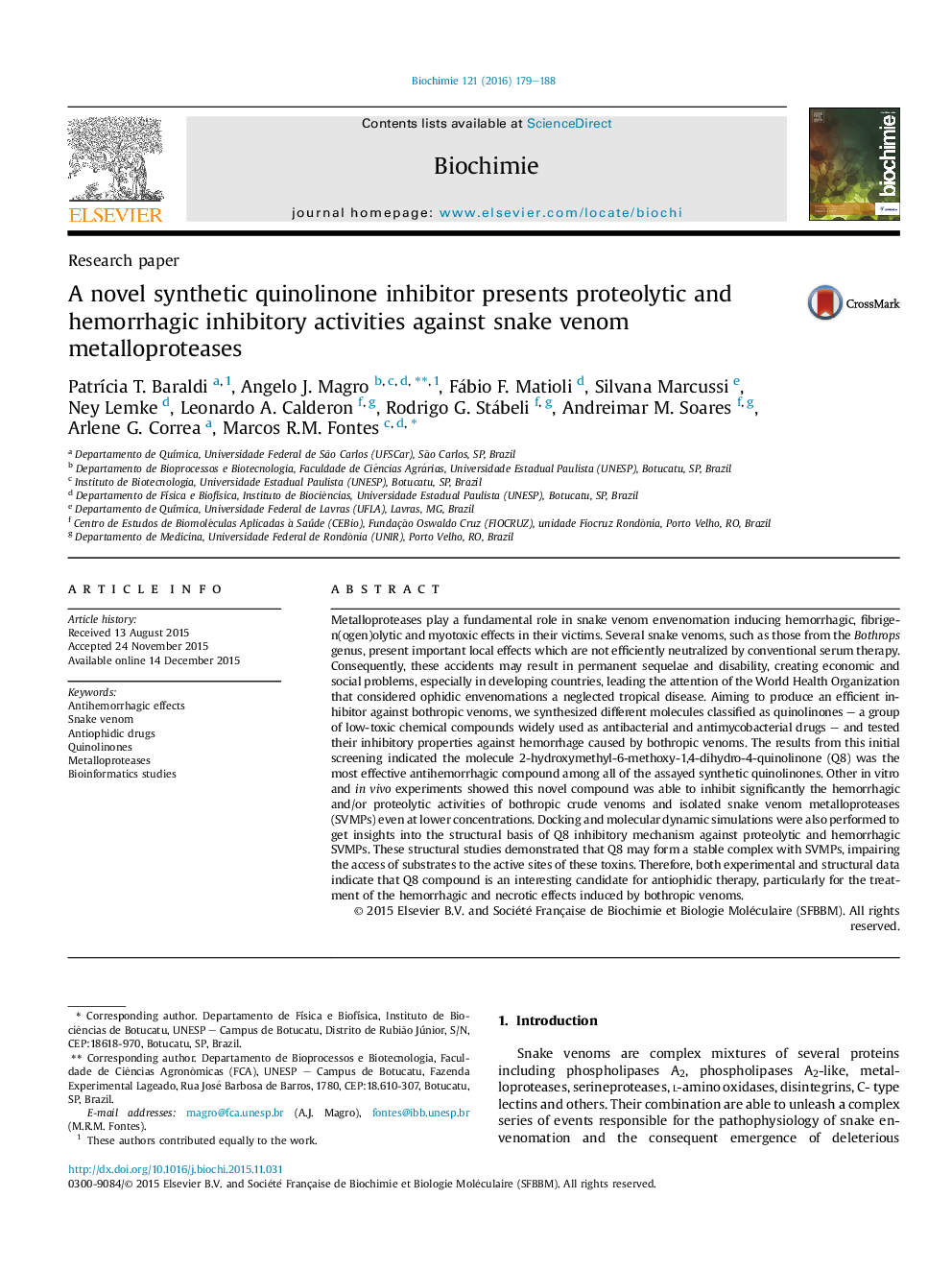| کد مقاله | کد نشریه | سال انتشار | مقاله انگلیسی | نسخه تمام متن |
|---|---|---|---|---|
| 1951924 | 1538410 | 2016 | 10 صفحه PDF | دانلود رایگان |
• A novel synthetic quinolinone was synthesized.
• Biological properties of the compound against venoms and metalloproteinases were tested.
• The compound was able to neutralize hemorrhagic and fibrinogenolytic activities.
• Docking and molecular simulations were performed with metalloproteinase/inhibitor.
• The inhibitor fits into the metalloproteinase active site forming a stable complex.
Metalloproteases play a fundamental role in snake venom envenomation inducing hemorrhagic, fibrigen(ogen)olytic and myotoxic effects in their victims. Several snake venoms, such as those from the Bothrops genus, present important local effects which are not efficiently neutralized by conventional serum therapy. Consequently, these accidents may result in permanent sequelae and disability, creating economic and social problems, especially in developing countries, leading the attention of the World Health Organization that considered ophidic envenomations a neglected tropical disease. Aiming to produce an efficient inhibitor against bothropic venoms, we synthesized different molecules classified as quinolinones – a group of low-toxic chemical compounds widely used as antibacterial and antimycobacterial drugs – and tested their inhibitory properties against hemorrhage caused by bothropic venoms. The results from this initial screening indicated the molecule 2-hydroxymethyl-6-methoxy-1,4-dihydro-4-quinolinone (Q8) was the most effective antihemorrhagic compound among all of the assayed synthetic quinolinones. Other in vitro and in vivo experiments showed this novel compound was able to inhibit significantly the hemorrhagic and/or proteolytic activities of bothropic crude venoms and isolated snake venom metalloproteases (SVMPs) even at lower concentrations. Docking and molecular dynamic simulations were also performed to get insights into the structural basis of Q8 inhibitory mechanism against proteolytic and hemorrhagic SVMPs. These structural studies demonstrated that Q8 may form a stable complex with SVMPs, impairing the access of substrates to the active sites of these toxins. Therefore, both experimental and structural data indicate that Q8 compound is an interesting candidate for antiophidic therapy, particularly for the treatment of the hemorrhagic and necrotic effects induced by bothropic venoms.
Figure optionsDownload high-quality image (169 K)Download as PowerPoint slide
Journal: Biochimie - Volume 121, February 2016, Pages 179–188
